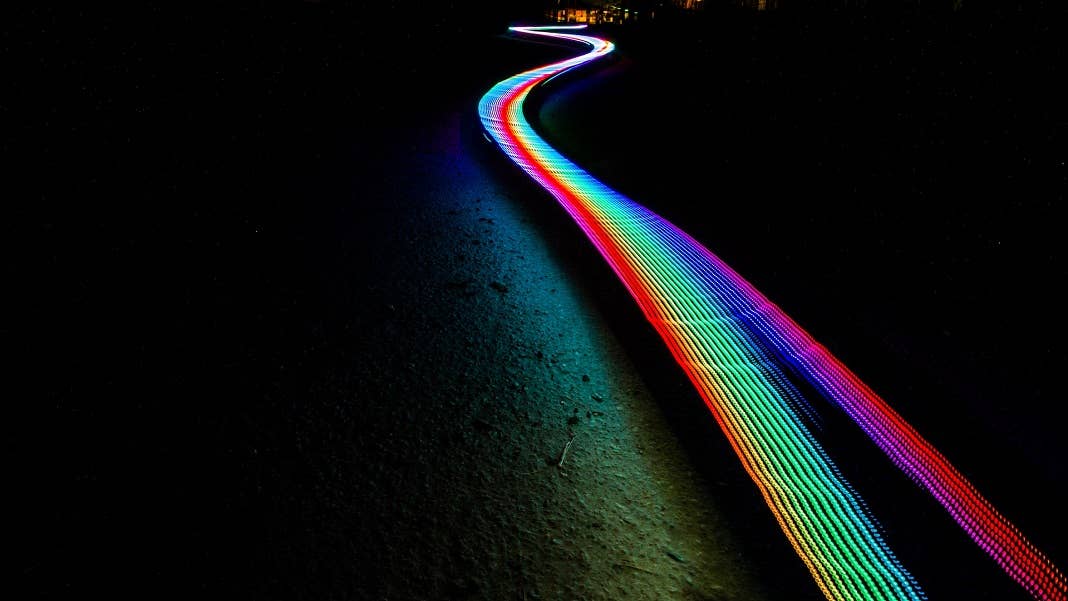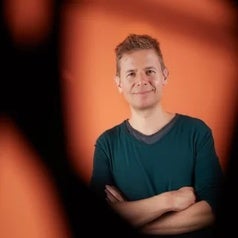Physicists Recreated the Famous Double-Slit Experiment Using Time Instead of Space

Share
More than 200 years ago, the English scientist Thomas Young carried out a famous test known as the “double-slit experiment.” He shone a beam of light at a screen with two slits in it, and observed that the light that passed through the apertures formed a pattern of dark and bright bands.
At the time, the experiment was understood to demonstrate that light was a wave. The “interference pattern” is caused by light waves passing through both slits and interfering with each other on the other side, producing bright bands where the peaks of the two waves line up and dark bands where a peak meets a trough and the two cancel out.
In the 20th century, physicists realized the experiment could be adapted to demonstrate that light not only behaves like a wave, but also like a particle (called a photon). In quantum mechanical theory, this particle still has wave properties—so the wave associated with even a single photon passes through both slits, and creates interference.
In a new twist on the classic experiment, we replaced the slits in the screen with “slits” in time—and discovered a new kind of interference pattern. Our results were published this week in Nature Physics.
Slits in Time
Our team, led by Riccardo Sapienza at Imperial College London, fired light through a material that changes its properties in femtoseconds (quadrillionths of a second), only allowing light to pass through at specific times in quick succession.
We still saw interference patterns, but instead of showing up as bands of bright and dark, they showed up as changes in the frequency or color of the beams of light.
To carry out our experiment, we devised a way to switch on and off the reflectivity of a screen incredibly quickly. We had a transparent screen that became a mirror for two brief instants, creating the equivalent of two slits in time.
Color Interference
So what do these slits in time do to light? If we think of light as a particle, a photon sent at this screen might be reflected by the first increase of reflectivity or by the second, and reach a detector.
However, the wave nature of the process means the photon is in a sense reflected by both temporal slits. This creates interference, and a varying pattern of color in the light that reaches the detector.
Be Part of the Future
Sign up to receive top stories about groundbreaking technologies and visionary thinkers from SingularityHub.


The amount of change in color is related to how fast the mirror changes its reflectivity. These changes must be on timescales comparable with the length of a single cycle of a light-wave, which is measured in femtoseconds.
Electronic devices cannot function quickly enough for this. So we had to use light to switch on and off the reflectivity of our screen.
We took a screen of indium tin oxide, a transparent material used in mobile phone screens, and made it reflective with a brief pulse of laser light.
From Space to Time
Our experiment is a beautiful demonstration of wave physics, and also shows how we can transfer concepts such as interference from the domain of space to the domain of time.
The experiment has also helped us in understanding materials that can minutely control the behavior of light in space and time. This will have applications in signal processing and perhaps even light-powered computers.![]()
This article is republished from The Conversation under a Creative Commons license. Read the original article.
Image Credit: Tobias Carlsson on Unsplash
I'm Stefan, in my work life a physicist. Currently my main post is Head of the School of Physics and Astronomy at Monash University in Melbourne, steering an amazing group of highly dedicated colleagues in world-class training and research in physics and astronomy. I also hold the Lee-Lucas Chair in Experimental Physics at Imperial College London, which I joined many years ago and still consider a place home. For over twenty years now (can't believe it) I conduct research in fundamental and applied plasmonics and metamaterials, nanophotonics, photonic energy conversion and optoelectronics. That's fun and has enabled me to see the world, but what really drives me is people development. I'm very proud of my alumni — at this point twenty-one of them have obtained faculty positions, all over the world: at École Polytechnique Montréal, Universidad Autónoma de Madrid, CSIC Madrid, Hong Kong City, Soochow University, IPTH Jena, University of KwaZulu-Natal, CNRS Grenoble, King's College London, University of Oman, University of Birmingham (two!), LMU Munich, Universidad de Santander, Shenzhen University, the University of Lisbon, University College London, the University of Buenos Aires, SUSTech, Northumbria University, and at the University of New South Wales in Sydney. Higher education in physics prepares you for highly valued jobs — many of my graduates are now in finance (London salaries calling), some have formed start-ups or are in industrial R&D; others have fallen off my radar. Hope you are all well! I'm a graduate from Caltech, where I first did a Masters in Applied Phycics and then a PhD in the group of Harry Atwater (thanks Harry!). Then I went to the University of Bath in the UK for my first tenured position, before joining Imperial in 2017. From 2019 till the start of 2022 I was mainly in Munich, establishing a new Chair in Hybrid Nanosystems at LMU. In March 2022 I joined Monash University, taking on the role of Head of the School of Physics and Astronomy, and re-uniting with a set of former colleauges from Imperial College there. My research has been quite successful, the main indicator being the great places my alumni went to. Additionally I was awarded the Sackler Prize in the Physical Sciences (together with my friend Mark Brongersma), the Paterson Medal of the Institute of Physics, and most recently the ACS Nano Lectureship. I am also a fellow of Optica and the Institute of Physics. The Royal Society supported parts of my time in London with a Wolfson Research Merit Award. Since 2017 I am on the ISI Highly Cited Researcher list. I was part of the initial editorial team of ACS Photonics, and am now Editor-in-Chief of Nanophotonics.
Related Articles

Are Animals and AI Conscious? Scientists Devise New Theories for How to Test This

These Brain Implants Are Smaller Than Cells and Can Be Injected Into Veins

This Wireless Brain Implant Is Smaller Than a Grain of Salt
What we’re reading
